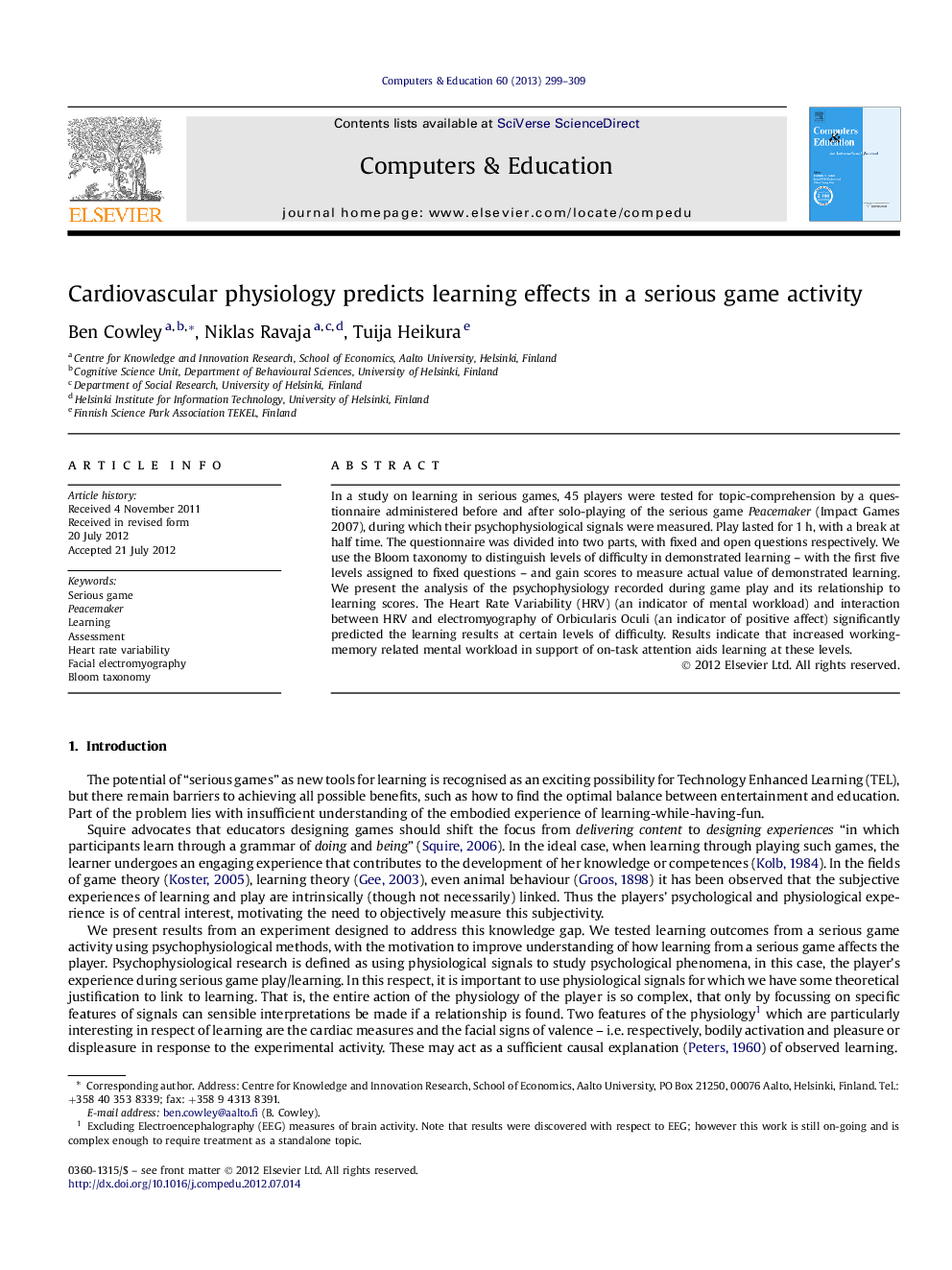| Article ID | Journal | Published Year | Pages | File Type |
|---|---|---|---|---|
| 348570 | Computers & Education | 2013 | 11 Pages |
In a study on learning in serious games, 45 players were tested for topic-comprehension by a questionnaire administered before and after solo-playing of the serious game Peacemaker (Impact Games 2007), during which their psychophysiological signals were measured. Play lasted for 1 h, with a break at half time. The questionnaire was divided into two parts, with fixed and open questions respectively. We use the Bloom taxonomy to distinguish levels of difficulty in demonstrated learning – with the first five levels assigned to fixed questions – and gain scores to measure actual value of demonstrated learning. We present the analysis of the psychophysiology recorded during game play and its relationship to learning scores. The Heart Rate Variability (HRV) (an indicator of mental workload) and interaction between HRV and electromyography of Orbicularis Oculi (an indicator of positive affect) significantly predicted the learning results at certain levels of difficulty. Results indicate that increased working-memory related mental workload in support of on-task attention aids learning at these levels.
► Study of learning effects in a serious game activity using psychophysiology. ► Monitoring of heart rate/emotion using Electrocardiogram/facial Electromyography. ► Assessment method based on gain scores from pre- and post-test questionnaires. ► Significant findings for Heart Rate Variability (HRV) and positive emotion. ► HRV result offers concrete lessons for edutainment game design.
